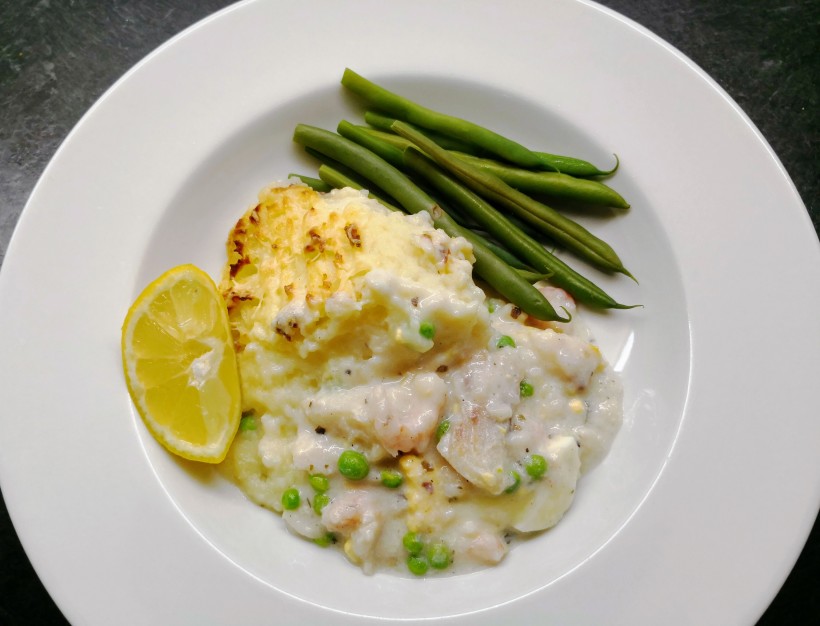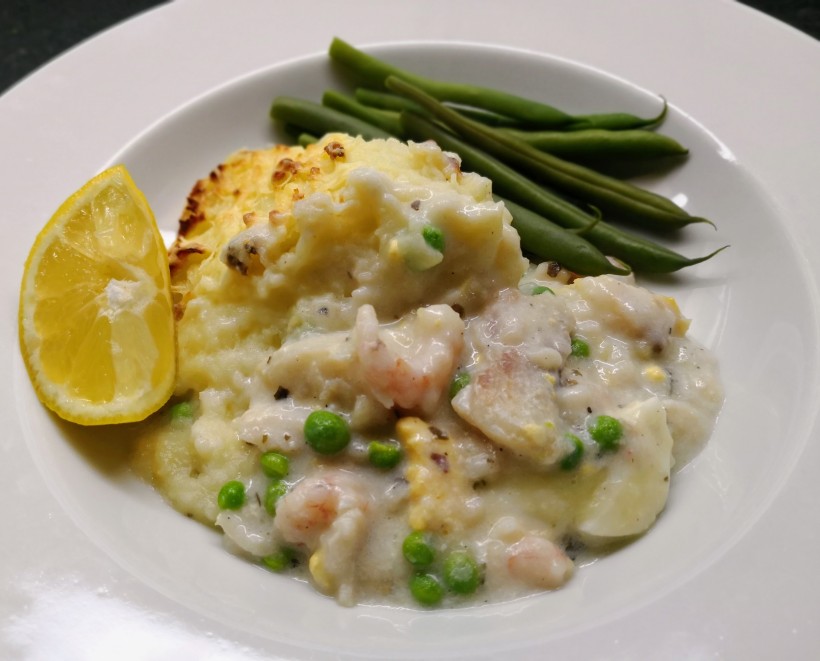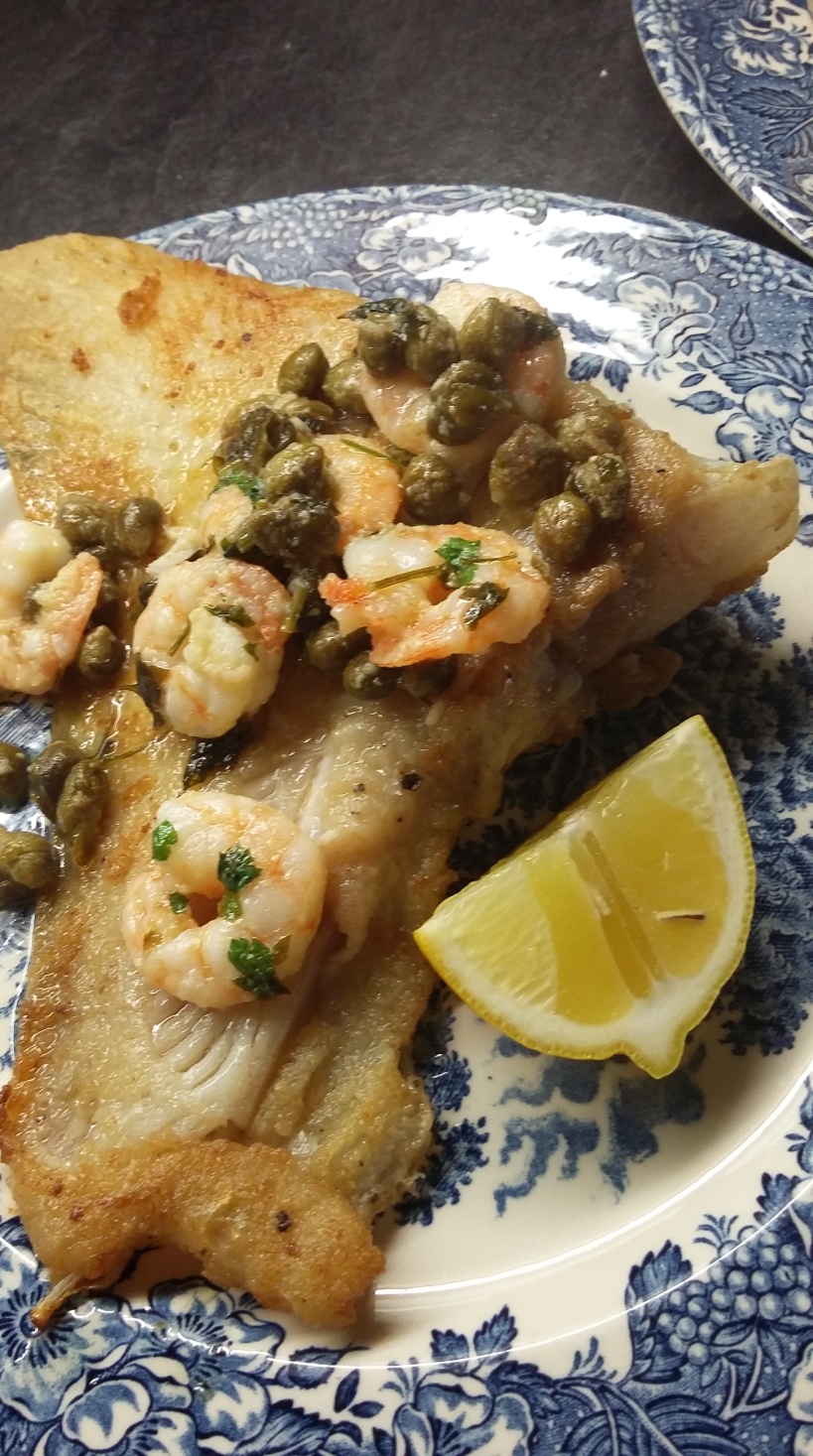Fish Pie to me really is comfort food. Creamy sauce, chunks of beautiful flaky fish and fluffy, cheesy mashed potato. It’s not difficult to make, it just takes a little time. It’s a great prepare ahead dish if you bring it up to room temperature an hour or so before you want to cook it. We’ve had cold foggy days, gloriously sunshiny days…it’s so hard to know what to cook. This always seems to fit the bill though!

You can keep it basic for a mid week family meal, or if you add scallops, prawns, capers and a mix of your favourite fish it really can be grand enough for entertaining. The choice is yours, you don’t need to be rigid with the measurements…make it your own! I make my bechamel the easy, all-in-one way and use olive oil instead of butter, but do feel free to make it the more traditional way making a roux of flour and butter then gradually adding the milk if you prefer.
Ingredients (to serve 4 generously)
- Approx 400g of mixed fish (I used cod, smoked haddock, salmon and prawns)
- 2 hard boiled eggs, peeled and chopped into chunks
- Approx 1kg floury potatoes, peeled and boiled until soft enough to mash
- Olive oil (or butter to add to the mash plus about 100ml of milk)
- 450ml of milk (full fat or semi skimmed)
- A bay leaf and a few peppercorns
- 2 heaped tablespoons of plain flour
- 1 tablespoon of olive oil
- A cup of frozen peas or 2 cups of washed fresh spinach
- About 2 tablespoons of grated cheese (I used cheddar)
- Salt and pepper
- Optional: a tablespoon each of finely chopped parsley, capers and gherkins
Place the fish in the milk with the bay leaf and peppercorns and heat gently. Once bubbles appear on the surface of the milk, remove the fish with a slotted spoon and set aside. Allow the milk to cool completely. This stage can be carried out the day before if it’s easier.

Add the flour and olive oil to the cold milk and bring gently to a simmer, whisking as you do. The sauce will start to thicken. Simmer for 2 or 3 minutes then remove from the heat. Break the fish into chunks then stir into the white sauce with the chopped egg and capers, gherkins and parsley if using. Now add the frozen peas (no need to defrost, they’ll cook in the oven) or spinach and stir to mix in well. Season, taste and adjust if necessary.
Pour the mixture into an ovenproof bowl (deep enough for a layer of mashed potato on top). Allow to cool down a little.
Mash the cooked potatoes while they are still hot, adding a generous slug of olive oil or a large knob of butter as you mash. When it’s free of lumps, whisk in the milk adding enough to give a soft, smooth purée that will hold its shape. Don’t use all the milk if it starts looking too wet, add extra if the potatoes are particularly dry.
Spoon (or pipe, if you’re that way inclined) the potato on top of the fish. Run a fork over it if you haven’t piped it as this will give you lots of lovely tiny peaks which will go brown and crunchy in the oven.

Bake at 180° fan (190° regular oven) for 30 minutes then sprinkle the grated cheese over the potato and bake for a further 10 minutes until the pie is bubbling and browned.
Leave to stand for 5 minutes before serving. Enjoy the fish pie love and hopefully someone else will offer to do the washing up…
























